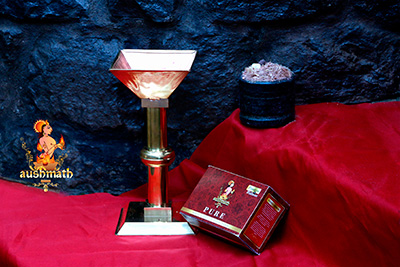
Benefits
PURE is an Ultimate Vedic Solution to protect human body from all illness creating vibrations that are being originated either naturally or technically. Optimising the natural vibrations of our cells is the only way to defend the illness creating vibrations.
PURE optimises and this optimization would certainly enhance the efficiency of individuals in all aspects of life.
1. Protects our family from all kinds of pollution (Soil, water, air and electromagnetic)
Agnihotra Yajna reduces the microbial load present in the ambient air significantly and thus purifies the air (especially indoor) which will help us to prevent infectious diseases caused by potent pathogens (Nautiyal et al., 2007). Agnihotra ash can be used for purifying water (Berk and Sharma, 2015). Most importantly, by performing the process PURE, rate of vibration of our cells will be optimised and this optimization will defend the electromagnetic pollution caused by electronic appliances, power lines and mobile phones.
2. Prevents the illness creating radiations emanating from earth from affecting our homes (i.e…No geopathic stress)
If our body receives the vibrations of all seven cosmic rays via breath on a daily basis, rate of vibration of our body’s cells would be optimised and no ill health creating vibrations, being originated either naturally or technically will resonate with our body’s vibrational rate.
3. Anti-inflammatory and Anti-oxidant effects
Presence of compounds such as 2, 4-bis (tert-butyl)-phenol in the fumes emanating from the PANACEA ULTIMATE indicates that ‘Sacred’ fumes possess anti-oxidant (free radical scavenging activity) and anti-inflammatory actions.
4. Healing Respiratory Tract Disorders
Medicinal smoke therapy is best suited for infections/diseases associated with respiratory tract and lungs (Nautiyal et al., 2007).
5. Increases efficiency in every aspect of life
Protecting our body from all low frequency broad banded ill health creating vibrations would certainly enhance our efficiency in all aspects.
6. Enhances Memory and ability to learn
Cowdung is one of the indispensable ingredients in the fumigating mixture of Agnihotra as the combustion of Cowdung produces ‘Nitric oxide’ (NO) and Hydrogen sulfide’(H2S). NO plays an important role in the various body functions, including platelet aggregation (Radomski et al., 1990) and neurotransmission (Bredt and Snyder, 1989). H2S acts as neuromodulators as it stimulates N-methyl-D-aspartate (NMDA) receptors to enhance long-term potentiation suggesting a novel neuromodulatory role in vivo (Whiteman et al., 2000). It is worth mentioning that concentration of H2S levels in the brain of Alzheimer’s disease patients was found significantly low (Whiteman et al., 2000).
7. Breaks addictions
Daily practice of Agnihotra will undoubtedly help people to recover from chronic alcoholism (Golechha et al., 1991) and can cure people from resistant demotivated smack addiction (Golechha et al., 1987).
8. Energises Chakras
The seven major energy centres in our body system will be energized and balanced by receiving the energy possessed by seven rays of light via breath on a daily basis.
9. Pure Positive Cosmic Energy
Performance of Agnihotra Yajna helps the performer to attract and absorb pure positive cosmic energy or otherwise known as “universal prana” as primary nutriment for maintaining health.
References
Berk U, Sharma S (2015). Effect of Agnihotra energy field on water purification. Indian Journal of Traditional Knowledge. 1(1): 63-68.
Bredt DS, Snyder SH (1989). Nitric oxide mediates glutamate-linked enhancement of cGMP levels in the cerebellum. Proc Natl Acad Sci USA. 86: 9030–9033.
Golechha GR, Deshpande M, Sethi IC, Singh RA (1987). Agnihotra – a useful adjunct in recovery of a resistant demotivated smack addict. Indian J Psychiatry. 29(3): 247–252.
Goleghha GR, Sethi IG, Deshpande, Rani U (1991). Agnihotra in the treatment of alcoholism. Indian J Psychiat. 33(1), 44—47.
Nautiyal CS, Chauhan PS, Nene YL (2007). Medicinal smoke reduces airborne bacteria. J Ethnopharmacol. 114: 446–451.
Oschman JL (2007) Can electrons act as antioxidants? A review and commentary. J Altern Complement Med. 13(9):955-67.
Radomski MW, Palmer RM, Moncada S (1990) Characterization of the L-arginine. nitric oxide pathway in human platelets. Br J Pharmacol. 101:325–328.
Whiteman M, Armstrong JS, Chu SH, Jia-Ling S, Wong BS, Cheung NS, Halliwell B, Moore PK (2004). The novel neuromodulator hydrogen sulfide: an endogenous peroxynitrite ‘scavenger’?. J Neurochem. 90: 765–768.